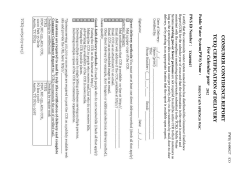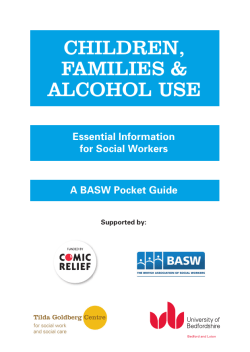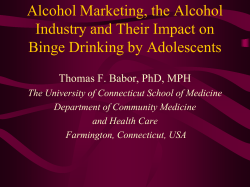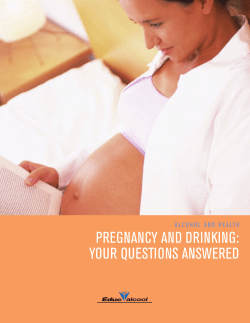
Document 74247
months of age. High nitrate levels in the drinking water can cause blue baby syndrome. Nitrate levels may rise quickly for short periods of time because of rainfall or agricultural activity. If you are caring for an infant, you should ask for advice from your health care provider. LEAD: If present, elevated levels of lead can cause serious health problems, especially for pregnant women and young children. Lead in drinking water is primarily from materials and components associated with service lines and home plumbing. The Township of Freehold is responsible for providing high quality drinking water, but cannot control the variety of materials used in plumbing components. When your water has been sitting for several hours, you can minimize the potential for lead exposure by flushing your tap for 30 seconds to 2 minutes before using water for drinking or cooking. If you are concerned about lead in your water, you may wish to have your water tested. Information on lead in drinking water is available from the Safe Drinking Water Hotline or at http://epa.gov/safewater/lead. In 2010 the daily average for water treated by the Township's four water treatment facilities was approximately 3.2 million gallons per day. The total treatment capacity of the four treatment plants is approximately 10 million gallons per day (MGD); however, the actual supply from the wells is limited by the NJDEP Water Allocation Permit. The Township has five water storage tanks with a combined capacity of 9.5 million gallons. The Township also has four emergency connections with Freehold Borough, two emergency interconnnections with Gordons Corner Water Company and one emergency interconnection with New Jersey American Water Company. waTer supply faciliTies The Township’s water supply facilities consist of ten water supply wells located in three well fields. Wells 9, 10, 11, 14 and 15 are located at the Jackson Mill Road Well Field, Wells 8 and 13 are located at the Koenig Lane Well Field, and Wells 3, 7 and 12 are located at the Point Ivy Well Field. The Township maintains four treatment facilities. Two treatment facilities are located at the Jackson Mill Road Well streams-dia. at 60 psi inches 1/4 1/8 1/16 1/32 Even Numbered Residences Even Numbered Days (24 Hours) gallons 1,181,500 296,000 74,000 18,500 TOwNsHip Of fREEHOLD Results from 2010 water use ordinance Freehold Township enforces a year-round water use restriction policy. This policy is mandated by State regulations which require a water conservation program for Township customers. Water for lawn purposes and at-home car washing is permitted only during the above periods: A violation of this restriction may result in a complaint being issued in the Municipal Court under section 15-1.7 of the Township Code. Dear Water Consumer, This 2011 Water Quality Report is an annual report to all water consumers on the quality of water provided by the Township of Freehold. This Report meets the Federal Safe Drinking Water Act requirements for Consumer Confidence Reports. For more information, contact Freehold Township at (732) 294-2170. liters 4,472,000 1,120,360 280,100 70,020 Township of freehold One Municipal Plaza Freehold, NJ 07728-3099 www.twp.freehold.nj.us This 2011 Water Quality Report provides our customers with information on the sources of our drinking water, our water system, applicable health information and the concentrations of detected contaminants with a comparison to water quality regulations. waste per quarter cubic feet cubic meters 158,000 4,475 39,400 1,115 9,850 280 2,465 70 We encourage you to read this Report and study the water quality test results for the 2010 calendar year. We hope you find this Report informative and that the information provides you with a better understanding of what is involved in bringing high quality water to your faucet. Prst. Std. US Postage Paid Permit 298 Freehold, NJ FREE NE IP SH LD TOWN HO W JE R SEY Mayor David M. Salkin 2 Township committee Eugene B. Golub, Deputy Mayor Anthony J. Ammiano Robert C. McGirr Barbara J. McMorrow 11 water quality report 11 water quality report All residences are permitted to water on the 31st of the month (24 Hours) waste per quarter mm 6.5 3.2 1.6 .8 2 Odd-Numbered Residences Odd Numbered Days (24 Hours) Field, and one treatment facility is located at each of the other two well fields. The treatment process consists of pressure filtration for iron and manganese removal, chemical treatment for pH adjustment, corrosion control, disinfection and fluoridation. The Township has taken extra measures to ensure the safety of our water. Our Emergency Response Plan was recently updated in order to ensure the ultimate safety of our customers. The Township of Freehold is committed to providing our consumers with high quality drinking water and information about the drinking water that we provide. If you would like additional information or if you have any questions concerning this Report, please call the Township Water Department at 732.294.2170. You may also call the EPA Safe Drinking Water Hotline at 800.426.4791 for further information. Thank you for the opportunity to serve you. 2 TOwNsHip Of fREEHOLD sources of drinking waTer Assessment site at www.state.nj.us/dep/swap/ or by contacting the NJDEP Bureau of Safe Drinking Water at 609.292.5550. You can also refer to the EPA website at www.epa.gov/safewater/ccrl.html for any updates or for downloading the Source Water Assessment document. A summary of the Source Water Assessment has been provided for your convenience. If you have questions concerning the summary or the Consumer Confidence Report you may contact the Freehold Township Water Department at 732.294.2170. Both tap water and bottled water may come from groundwater (springs, wells) or surface waters (rivers, lakes, ponds, streams and reservoirs). As water travels over the surface of the land or through the ground, it dissolves naturally occurring minerals and can pick up substances resulting from the presence of animals or from human activity. Both groundwater and surface water sources provide water supply to the Township of Freehold. Approximately 80% of its water comes from ten groundwater wells located on three different well fields within the Township. Surface water from the Matchaponix Brook in Manalapan is purchased by the Township from the United Water Matchaponix, which provides approximately 20% of the total water supply for the Township. The New Jersey Department of Environmental Protection (NJDEP) has completed and issued the Source Water Assessment reports for all public water systems in 2004. Further information on the Source Water Assessment program can be obtained by logging onto the NJDEP Source Water waTer sysTeM iMproveMenTs The Township of Freehold is committed to providing water that meets or surpasses all Federal and State requirements for drinking water. In general, our water system stands in good condition as a result of rehabilitation and improvements to the system infrastructure. Concerning decisions that may affect the quality of water, the opportunity for public participation is provided during the regularly scheduled Township meetings held each month at 8 pm. source waTer assessMenT suMMary freehold Township waTer deparTMenT - pwsid # 1316001 Freehold Township Water Department is a public community water system consisting of 10 well(s), 0 wells under the influence of surface water, 0 surface water intake(s), 2 purchased ground water source(s), and 1 purchased surface water source(s). This system’s source water comes from the following aquifer(s): Englishtown aquifer system, middle Potomac-RaritanMagothy aquifer, Potomac-Raritan-Magothy aquifer system, upper Potomac-Raritan-Magothy aquifer. This system purchases water from the following water system, MATCHAPONIX WATER CO. suscepTibiliTy raTings for freehold Township waTer deparTMenT sources The table below illustrates the susceptibility ratings for the seven contaminant categories (and radon) for each source in the system. The table provides the number of wells and intakes that rated high (H), medium (M), or low (L) for each contaminant category. For susceptibility ratings of purchased water, refer to the specific water system’s source water assessment report. The seven contaminant categories are defined at the bottom of this page. DEP considered all surface water highly susceptible to pathogens, therefore all intakes received a high rating for the pathogen category. For the purpose of Source Water Assessment Program, radionuclides are more of a concern for ground water than surface water. As a result, surface water intakes’ susceptibility to radionuclides was not determined and they all received a low rating. IF A SYSTEM IS RATED HIGHLY SUSCEPTIBLE FOR A CONTAMINANT CATEGORY, IT DOES NOT MEAN A CUSTOMER IS OR WILL BE CONSUMING CONTAMINATED DRINKING WATER. The rating reflects the potential for contamination of source water, not the existence of contamination. Public water systems are required to monitor for regulated contaminants and to install treatment if any contaminants are detected at frequencies and concentrations above allowable levels. As a result of the assessments, DEP may customize (change existing) monitoring schedules based on the susceptibility ratings. Volatile Pathogens Nutrients Pesticides Disinfection Organic Inorganics Radionuclides Radon Byproduct Compounds Sources Wells - 10 H M L 10 H M L 10 H M L 10 H M L 10 Precursors H M L 2 8 H M L 6 4 H M L 10 H M L 9 1 GUDI - 0 Surface water intakes- 0 • Pathogens: Disease-causing organisms such as bacteria and viruses. Common sources are animal and human fecal wastes. • Nutrients: Compounds, minerals and elements that aid growth, that are both naturally occurring and man-made. Examples include nitrogen and phosphorus. • Volatile Organic Compounds: Man-made chemicals used as solvents, degreasers, and gasoline components. Examples include benzene, methyl tertiary butyl ether (MTBE), and vinyl chloride. • Pesticides: Man-made chemicals used to control pests, weeds and fungus. Common sources include land application and manufacturing centers of pesticides. Examples include herbicides such as atrazine, and insecticides such as chlordane. • Inorganics: Mineral-based compounds that are both naturally occurring and man-made. Examples include arsenic, asbestos, copper, lead, and nitrate. • Radionuclides: Radioactive substances that are both naturally occurring and man-made. Examples include radium and uranium. • Radon: Colorless, odorless, cancer-causing gas that occurs naturally in the environment. For more information go to http://www.nj.gov/dep/rpp/radon/index.htm or call (800) 648-0394. • Disinfection Byproduct Precursors: A common source is naturally occurring organic matter in surface water. Disinfection byproducts are formed when the disinfectants (usually chlorine) used to kill pathogens react with dissolved organic material (for example leaves) present in surface water. coMpliance wiTh drinking waTer sTandards In order to ensure that tap water is safe to drink, the Environmental Protection Agency (EPA) and the NJDEP prescribe regulations which limit the amount of certain contaminants in water provided by public water systems and require water suppliers to monitor and treat for potentially harmful contaminants. Bottled water is similarly regulated by the Food and Drug Administration and must provide the same protection for public health as tap water. our water, which is treated according to the EPA’s and NJDEP’s regulations, continually surpasses the quality standards set by those agencies. waTer QualiTy daTa Table The table lists all drinking water contaminants detected during the 2010 calendar year. The presence of these contaminants does not necessarily indicate that the water poses a health risk. Unless otherwise noted, the data shown in the table is from testing performed on samples of water taken from Jan. 1 through Dec. 31, 2010. The State allows us to monitor for certain contaminants less than once per year because the concentrations of these contaminants are not expected to vary significantly from year to year. Also, monitoring waivers for asbestos and synthetic organic chemicals were granted by the NJDEP for the 2010 calendar year. healTh/educaTional inforMaTion Some people may be more vulnerable to contaminants in drinking water than the general population. Immuno-compromised persons such as persons with cancer undergoing chemo-therapy, persons who have undergone organ transplants, people with HIV/AIDS or other immune system disorders, some elderly, and infants can be TerMs and abbreviaTions N/A: not applicable. MCL (MAxiMuM CONTAMiNANT LEvEL): the highest level of a contaminant that is allowed in drinking water. MCLs are set as close to the MCLGs as feasible using the best available treatment technology. MCLG (MAxiMuM CONTAMiNANT LEvEL GOAL): the level of a contaminant in drinking water below which there is no known or expected risk to health. MCLGs allow for a margin of safety. MRDL (MAxiMuM REsiDuAL DisiNfECTANT LEvEL): The highest level of a disinfectant allowed in drinking water. There is convincing evidence that addition of a disinfectant is necessary for the control of microbial contaminants. MRDLG (MAxiMuM REsiDuAL DisiNfECTANT GOAL): The level of a drinking water disinfectant below which there is no known or expected risk to health. MRDLGs do not reflect the benefits of the use of disinfectants to control microbial contamination. AL (ACTiON LEvEL): the concentration of a contaminant which, if exceeded, triggers treatment or other requirements which a water system must follow. TT (TREATMENT TECHNiquE): a required process intended to reduce the level of a contaminant in drinking water. ND: not detected. PPM: PARTS PER MILLIoN; (comparable to one minute in two years or 1 cent in $10,000.00). ppb: parts per billion; (comparable to one minute in two thousand years or 1 cent in $10,000,000.00). 11 water quality report prevent dental caries. Some people who drink water containing fluoride in excess of the MCL over many years could get bone disease, including pain and tenderness of the bones. Children may get mottled teeth. HALOACETiC ACiDs (HAA5): HAA5 are a group of chemicals that are formed along with other disinfection by-products when chlorine or other disinfectants used to control microbial contaminants in drinking water react with naturally occurring organic and inorganic matter in water. TOTAL TRiHALOMETHANEs (TTHMs): Some people who drink water containing trihalomethanes in excess of the MCL over many years may experience problems with their liver, kidneys, or central nervous systems, and may have an increased risk of getting cancer. TOTAL COLifORM: Coliforms are bacteria that are naturally present in the environment and are used as an indicator that other, potentially harmful bacteria may be present. particularly at risk from infections. These people should seek advice about drinking water from their health care providers. EPA/CDC (Centers for Disease Control) guidelines on appropriate means to lessen the risk of infection by Cryptosporidium and other microbial contaminants are available from the EPA Safe Drinking Water Hotline at : 800.426.4791. ALpHA EMiTTERs: Certain minerals are radioactive and may emit a form of radiation know as alpha radiation. Some people who drink water containing alpha emitters in excess of the MCL over many years may have an increased risk of getting cancer. The Township has not exceeded the MCL level imposed by the Department of Environmental Protection. BARiuM: Some people who drink water containing barium in excess of the MCL over many years could experience an increase in their blood pressure. COppER: Copper is an essential nutrient, but some people who drink water containing copper in excess of the action level over many years could suffer liver or kidney damage. People with Wilson’s disease should consult their personal doctor. fLuORiDE: Freehold Township fluoridates its water in accordance to ADA recommendations in order to ETHyLBENzENE: Some people who drink water containing ethylbenzene well in excess of the MCL over many years may experience problems with their liver or kidneys. spECiAL CONsiDERATiON REGARDiNG CHiLDREN, pREGNANT wOMEN, NuRsiNG MOTHERs AND OTHERs: Children may receive a slightly higher amount of a contaminant present in the water than adults, on a body weight basis, because they may drink a greater amount of water per pound of body weight than adults. For this reason, reproductive or developmental effects are used for calculating a drinking water standard if these effects occur at lower levels than other health effects of concern. If there is insufficient toxicity information for a chemical (for example, lack of data on reproductive or developmental effects), an extra uncertainty factor may be incorporated into the calculation of the drinking water standard, thus making the standard more stringent, to account for additional uncertainties regarding these effects. In cases of lead and nitrate, effects on infants and children are the health endpoints upon which standards are based. NiTRATE: Nitrate in drinking water at levels above 10 ppm is a health risk for infants of less than six CONCENTRATIONS OF DETECTED WATER CONTAMINANTS 2010-FREEHOLD TOWNSHIP (PWS ID# NJ1316001) ContaminantsPrimary Standards Radioactive Contaminants Alpha emitters (pCi/l)* MCL MCLG Jackson Mill WTP North Koenig Lane WTP Point Ivy WTP United Water Matchaponix 15 0 1.6 0.72 1.29 <3.0 to + .926 Inorganic Chemicals Barium (ppm) 2 2 Copper (ppm)* AL: 1.3 1.3 Fluoride (ppm) 4 4 Lead (ppb)* AL: 15 0 Nitrate (ppm) 10 10 0.045 .013 0.054 Distribution System 90th percentile: 0.1; Sites above AL:0 0.90 0.92 0.93 Distribution System 90th percentile: 1.0; Sites above AL:0 ND ND ND Likely Sources of Contamination Erosion of natural deposits. 0.040 Discharge of drilling wastes; discharge from metal refineries; erosion of natural deposits. N/A Corrosion of household plumbing; erosion of natural deposits. 0.96 Erosion of natural deposits; discharge from plastic and fertilizer factories; water additive promoting strong teeth. N/A Corrosion of household plumbing; erosion of natural deposits. 0.50 Runoff from fertilizer use; leaching from septic tanks and sewage; erosion of natural deposits. Volatile Organic Compounds 700 700 Total Coliform Ethylbenzene (ppb) 1 0 ND 360 Samples taken per year exceeded ND ND ND Discharge from petroleum refineries. 0 Naturally present in the environment. TTHM [Total 80 N/A Dist. System highest annual avg. 32.0 Highest avg: 45.0 Range 0.0-43.0 Range: 12.5-74.8 MC/L for the month of July 2010 Trihalomethanes] (ppb) HAA5 [Haloacetic Acids] (ppb) 60 N/A Range 1.0-17.0 Highest avg: 29.4 Distribution System highest annual average 15.0 By-product of drinking water disinfection. By-product of drinking water disinfection. Range: 1.46-48.02 Turbidity Turbidity (NTU) Contaminants Secondary *** 0 Sampling of turbidity was not required. Range: 0.036-0.360 Rec. Upper Limit Soil runoff. Erosion of natural deposits; by-product of water Standards Aluminum (ppm) 0.2 0.032 0.075 <0.025 ND coagulation additives. Chloride (ppm) 250 6.24 7.11 7.10 54.9 Erosion of natural deposits. Iron (ppm) 0.3 0.050 0.040 0.040 Avg.: 0.18 Erosion of natural deposits. Manganese (ppm) 0.05 0.030 0.010 0.020 0.011 Erosion of natural deposits. Sulfate (ppm) 250 6.29 6.54 6.50 18.60 Naturally present in the environment. Sodium (ppm) 50 5.23 14.60 5.50 33.0 Erosion of natural deposits. Total Dissolved Solids (ppm) 500 91.0 109.0 114.0 164.0 Soil runoff. Synthetic Organic Contaminants (i.e. Pesticides and Herbicides) In 2010, the Township of Freehold was granted a sampling waiver for Runoff from herbicides and insecticides. SOC’s by the NJDEP and records indicate no past problems with these contaminants. Disinfectants Chlorine MRDL 4 MRDLG 4 * Samples results from previous years. Avg. 1.11 Avg. 1.25 Avg. 1.19 Average: 0.93 Water additive used to control microbes. ***Turbidity MCL: < 0.3 NTU in 95% of samples/month and never greater than 1 NTU.
© Copyright 2025



















